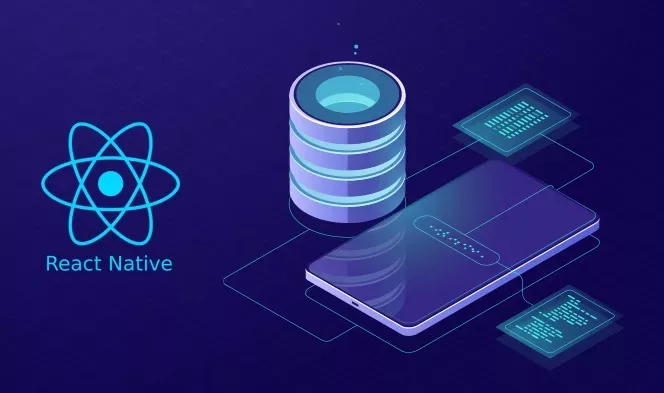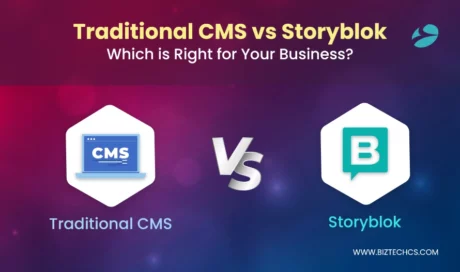3535
Top Databases for React Native App Development
07 May, 2021
7 min read
3535
07 May, 2021
7 min read

React Native is one of the most used frameworks when it comes to app development. It is a perfect solution for startups as well as enterprise businesses to develop applications. Many companies have already leveraged React Native and have developed interactive applications.
When talking about React Native app development, there are multiple things that go into it. One of the major and most important parts is the database. More complex the data, the more secure your database must be. In this article, I will walk you through different factors one must consider while selecting a database and which is the perfect solution for your application.
The line of codes defines other things you use for React Native App development. If you write less than 20 to 40 lines of code for simple CRUD operations then prefer not to use any advanced database. Because using advanced databases for small CRUD operations will make your coding more complicated.
More collaboration features mean more possibilities for data conflicts. Look for databases that share the conflict handling policies on their website or repository pages. Learn more about database documents and become aware of how they handle data syncing and conflicts. This will help you decide on the correct database for your application.
Regardless of the database you use, you need to make sure that it has good memory management. Inefficient database memory handling can often lead to app crashes. If you think your database is not managing memory efficiently, you can do a compaction process.
Compaction is a proactive process for memory management in which it deletes certain documents that are of no use. This will empty some memory from the database and the app will work better. This process is similar to the “Garbage Collection” part of programming which makes sure the memory is available to users.
When working with server-side or client-side scripting languages, key-value or JSON structure is the default option for storage in most databases. React Native developer or in-built library will serialize the strings. Oftentimes serialization can cause serious halts and issues in application performance because of its limited resources. This is one of the major reasons behind companies using a database that helps to store complex data like documents, objects, and other complex data types.
Today users want their applications to work offline as well. Hence, it is important to use databases that sync with your application when users connect to the internet. To do so, you also need to make sure that the offline database is secure as data will be stored on users’ phones.
These are some of the major factors you need to consider when selecting the database. Understand your customer and app requirements and then make the decision of finalizing the database.
Going further, let’s talk about different databases you can use in your React Native app development:
Realm is an object-oriented and open-source database that is useful to develop iOS and Android applications. Realm databases gave birth to real-time and offline applications that run on mobile devices and wearable devices. It operates 10 times faster than relational databases and supports complicated data types too.
Realm also has its own database search engine which makes it easy to access any sources or threads. Developers prefer to use Realm databases to improve the performance of React Native applications by dealing with huge amounts of data. As it is a high-performing database, Realm has proven to fix queries better and more easily, compared to other databases. Realm is the best database choice for large-sized apps because of its open-source nature and ease to use. Some of the benefits of using Realm are:
Google-based Firebase database has NoSQL and is a perfect database if your application is more into offline data updating and synchronization. It also manages MVC-based React Native applications that have high data requirements. Additionally, it even has a feature like tracking tools which helps you to find bugs in your application and remove if any. Additionally, it will even provide you full access to data removal from Google servers whenever you need it.
Following are some of the major benefits of the Firebase database:
The main aim of SQLite was to offer users the capacity to make local storage databases for mobile devices. Lite stands for a lightweight database that needs minimal setup. SQLite executes SQL policies with extra tools which help you to manage data easily. The performance of the database is not great but developers can make necessary changes as it is open-source. The following are the key benefits of using SQLite:
It is an open-source JavaScript database that preserves data in JSON format and enables CRUD operations via simple JS API. PouchDB allows apps to store data locally even when it is offline and syncs with compatible servers and CouchDB when the app connects with the internet. It keeps all users’ data synchronized as it is lightweight. It also helps to secure data easily for React Native applications and has an in-built authentication system. This system provides features like password storing using the latest encryption algorithms.
Following are some of the major advantages of PouchDB:
WatermelonDB was built with the aim to optimize React Native databases. It is developed on SQLite and works great with React Native databases. WatermelonDB can scale thousands of records in a minute and can create complex apps. This database can handle cached and multithreaded async functions. Following are some of the benefits of WatermelonDB:
Vasern is the most lightweight, open-source, and fast database for developing React Native applications. The Vasern API is useful for local storage as well as syncing and cloud storage across the app users. The structures and design of WatermelonDB get inspiration from different open-source databases. Following are some of the benefits of Vasern:
It is an open-source, high-performance backend database for React Native which allows developers to handle data in multiple ways. It also offers an API for multiple languages which includes iOS and Android. BerkeleyDB can also handle data in multiple ways like SQLite. It uses Key-value pair data and also has a byte array and supports multiple data items for a single key.
AsyncStorage is the asynchronous, unencrypted, key-value pair database used in React Native instead of LocalStorage. Persisting data in a mobile application has benefits when the user restarts the app, the data or the setting variable is available to the user just the way they used it before closing an app.
When starting with React Native app development, deciding on a database is the most vital thing as it includes users’ data. When deciding which database to use, take the above factors into account and also the app’s requirements. The database is the most crucial part as it needs to handle all the complex operations and keep data secure, synchronized, and available offline. If you need more guidance on which type of database is perfect for your React Native application or need help with development, you can reach out to us. Our team of experienced developers will guide you in React Native app development.
Read More: React Vs React Native
All product and company names are trademarks™, registered® or copyright© trademarks of their respective holders. Use of them does not imply any affiliation with or endorsement by them.

Storyblok
30033
By Devik Gondaliya
02 Apr, 2025

Storyblok
30991
By Devik Gondaliya
01 Apr, 2025

Storyblok
31611
By Devik Gondaliya
27 Mar, 2025